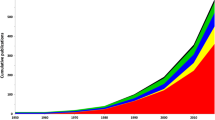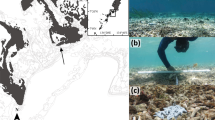Abstract
Tor malabaricus (Jerdon, 1849) commonly known as Malabar mahseer, is an endangered cyprinid endemic to Western Ghats biodiversity hotspot of India. For a better understanding of their feeding ecology, a study was conducted on 208 specimens collected from Chalakudy River with a total length ranging from 160–530 mm and total body weight of 71–1515 g. Gut content analysis revealed that T. malabaricus is primarily omnivorous, relying on benthic diet, preferably detritus (32.13%) and plant materials (22.96%) mostly throughout the year. However, during the spawning season (July-November), a greater preponderance of insects, crustaceans, molluscs, and nematodes was observed in their diet. The results of gastrosomatic index (GaSI) and feeding intensity indicated that feeding activity of T. malabaricus is considerably reduced during the spawning period. Results not only provide necessary baseline information about the feeding ecology of T. malabaricus in the wild for effectively managing and conserving the species but also provides an insight on its vulnerability for being displaced from its natural habitat due to the pressure from competition for food.





Similar content being viewed by others
REFERENCES
Ajithkumar, C.R., Remadevi, K., Thomas, K.R., and Biju, C.R., Fish fauna, abundance and distribution in Chalakudy river system, Kerala, J. Bombay Nat. His. Soc., 1999, vol. 96, pp. 244–254.
Al-Hussaini, A.H., On the functional morphology of the alimentary tract of some fishes in relation to differences in their feeding habits, Quart. J. Mar. Sci., 1949, vol. 9, pp. 190–240.
Araújo-Lima, C.A.R.M., Agostinho, A.A., and Fabré, N.N., Trophic aspects of fish communities in Brazilian rivers and reservoirs, in Limnology in Brazil, Tundisi, J.G., Bicudo, C.E.M., and Matsumura-Tundisi, T., Eds., Rio de Janeiro: ABC/SBL, 1995, pp. 105–136.
Arunachalam, M., Johnson, J.A., Sankaranarayanan, A., Soranam, R., Manimekalan, A., and Shanthi, P.N., Cultivable and ornamental fishes of Manimuthar river, Tamil Nadu, in Endemic Fish Diversity of Western Ghats, Ponniah, A.G., and Gopalakrishnan, A., Eds., NBFGR-NATP Publication, National Bureau of Fish Genetic Resources, Lucknow, India, 2000, pp. 247–253.
Bhakta, D., Das, S.K., Das, B.K., Nagesh, T.S., and Behera, S., Food and feeding habits of Otolithoides pama (Hamilton, 1822) occurring from Hooghly-Matlah estuary of West Bengal, India, Reg. Stud. Mar. Sci., 2019, vol.32, article 100860. https://doi.org/10.1016/j.rsma.2019.100860
Biju, C.R., Thomas, K.R., and Ajithkumar, C.R., Ecology of Hill Streams of the Western Ghats with Special Reference to Fish Community, Final Report, Project report submitted to Bombay Natural History Society, Bombay, India, 2000.
Bonato, K.O., Delariva, R.L., and Silva, J.C., Diet and trophic guilds of fish assemblages in two streams with different anthropic impacts in the northwest of Paraná, Brazil, Zoologia, 2012, vol. 29, pp. 27–38. https://doi.org/10.1590/S1984-46702012000100004
Bowen, S.H., Quantitative description of the diet, in Fisheries Techniques, Murphy, B.R., and Willis, D.W., Eds., Bethesda, MD: American Fisheries Society, 1996, pp. 513–532, 2nd ed.
Chacko, P.I., and Kurian, G.K., Feeding and breeding habits of the common carps of South India, 36th Proc. Indian Sci. Congr., Calcutta, 1949, p.160.
Das, B.K.R., and Goswami, U.C., Food spectrum and feeding intensity of Accrossocheilus hexagonolepis (McClelland), an endemic rheophilic teleost of commercial importance of Assam Himalayas, Indian J. Fish., 1997, vol. 44, pp. 295–300.
Dasgupta, M., Food and feeding habits of the mahseer, Tor putitora (Hamilton), Indian J. Fish., 1991, vol. 38, pp. 212–217.
Dasgupta, M., Relative length of the gut of some freshwater fishes of West Bengal in relation to food and feeding habits, Indian J. Fish., 2004, vol. 51, pp. 381–384.
de Oliveira, J.C.D., de Oliveira, J.F., Rebouças, L.G.F., Novaes, J.L.C., Fernandes, R.T.V., and Peretti, D., Diet of two insectivorous fish species in a Brazilian semiarid reservoir, J. Anim. Behav. Biometeorol., 2019, vol. 7, pp. 11–17.https://doi.org/10.31893/2318-1265jabb.v7n1p11-17
Desai, V. R., Studies on the fishery and biology of Tor tor (Hamilton) from river Narmada. I. Food and feeding Habits, J. Inland Fish. Soc. India, 1970, vol. 2, pp. 101–112.
Dinesh, K., Biology, Fishery and conservation of mahseers of Chalakudy River, Kerala, India, PhD Thesis, Kerala, India: Mahatma Gandhi Univ., 2010.
Gomez, K.A., and Gomez, A.A., Statistical Procedures for Agricultural Research, Wiley and Sons, New York, 1984, 2nd ed.
Gupta, S., and Banerjee, S., Food and Feeding habit of a Freshwater fish, Mystus tengara (Siluriformes: Bagridae), J. Ichthyol., 2014, vol. 54, pp. 742–748. https://doi.org/10.1134/S0032945214060071
Hynes, H.B.N., On the food of the freshwater sticklebacks (Gastrosteus aculeatus and Pygosteus pungitius) with a review of the methods used in the study of food fishes, J. Anim. Ecol., 1950, vol. 19, pp. 36–58.
Hyslop, E.J., Stomach contents analysis—a review of methods and their application, J. Fish Biol., 1980, vol. 17, pp. 411–429.
Ikusemiju, K., and Olaniyan, C.I.O., The food and feeding habits of the catfishes Chrysichthys walkeri (Gunther) and Chrysichthys filamentosus (Boulenger) and Chrysicthhys nigrodigitatus (Lacepede) in the Lekki lagoon, Nigeria, J. Fish Biol., 1977, vol. 10, pp. 105–112.
Ingram, B., Sungan, S., Gooley, G., Sim, S.Y., Tinggi, D., and De Silva, S.S., Induced spawning, larval development and rearing of two indigenous Malaysian mahseer, Tor tambroides and T. douronensis, Aquacult. Res., 2005, vol. 36, pp. 983–995. https://doi.org/10.1111/j.1365-2109.2005.01309.x
Ingram, B., Sungan, S., Tinggi, D., Sim, S.Y., and De Silva, S.S., Breeding performance of Malaysian mahseer, Tor tambroides and T. douronensis broodfish in captivity, Aquacult. Res., 2007, vol. 38, pp. 809–818. https://doi.org/10.1111/j.1365-2109.2007.01716.x
Johnson, J.A., and Arunachalam, M., Feeding habit and food partitioning in a stream fish community of Western Ghats, India, Environ. Biol. Fishes., 2012, vol. 93, pp. 51–60 https://doi.org/10.1007/s10641-011-9889-9
Jongman, R.H.G., ter Braak, C.J.F., and van Tongeren, O.F.R., Data Analysis in Community and Landscape Ecology, Cambridge: Cambridge Univ. Press, 1955, 2nd ed.
Kishor, B., Bhatt, J.P., Rawat, V.S., and Nautiyal, P., Variations in food habit of the Himalayan mahseer—Tor putitora (Ham) inhabiting Ganga river system in Garhwal region, Indian J. Fish., 1998, vol. 45, pp. 113–118.
Kohli, M.P.S., Ayyappan, S., Ogale, S.N., Langer, R.K., Prakash, C., Dube, K., Reddy, A.K., Patel, M.B., and Saharan, N., Observations on the performance of Tor khudree in floating cages in open waters, Appl. Fish. Aquacult., 2002, vol. 2, pp. 51–57.
Kurup, B.M., and Ranjeet, K., Invasion of exotic fish population in Periyar lake, Kerala: A hotspot of fish biodiversity, in Life History Traits of Freshwater Fish Population for Its Utilisation in Conservation, Ponniah, A.G., and Gopalakrishnan, A., Eds., NBFGR-NATP Publication, National Bureau of Fish Genetic Resources, Lucknow, India, 2002, pp. 1–4. AC-15.
Lagler, K.F., Freshwater Fishery Biology, Dubugue, Iowa: Wim C Brown Co., 1956, 2nd ed.
Lopes, V.G., Nessimian, J.L., Da-Silva, E.R., Gomes, J.H.C., Dias, A.C.I.M., Souza, L.C., and Branco, C.W.C., Habitat heterogeneity on feeding habit of two sympatric and congeneric characidae fishes in two tropical reservoirs, Iheringia, Sér. Zool., 2016, vol. 106, pp. 1–7. https://doi.org/10.1590/1678-4766e2016012
Macdonald, A.S.J., Circumventing the Mahseer and other sporting fish in India and Burma, Part I, J. Bombay Nat. His. Soc., 1942, vol. XLIII, no. 2, pp. 173–189.
Mahaseth, V.K., Food and feeding habit of Tor putitora of Mahakali River, Nepal, Bibechana, 2016, vol. 13, pp. 121–131.
Manorama, M., and Ramanujam, S.N., Diet of threatened fish Pethia shalynius (Yazdani and Talukdar, 1975) in the Umiam River, Northeast India, Asian Fish. Sci., 2017, vol. 30, pp. 38–49.
Minimol, K.C., Fishery management in Periyar Lake, PhD Thesis, Kottayam, India: Mahatma Gandhi Univ., 2000.
Mondal, D.K., and Kaviraj, A., Feeding and reproductive biology of Indian shad Gudusia chapra in two floodplain lakes in India, Electron. J. Biol., 2010, vol. 6, pp. 98–102.
Myers, N., Mittermeier, R.A., Mittermeier, C.G., Da Fonseca, G.A.B., and Kent, J., Biodiversity hotspots for conservation priorities, Nature, 2000, vol. 403, pp. 853–858. https://doi.org/10.1038/35002501
Ng, C.K., King of the Rivers: Mahseer in Malaysia and the Region, Inter Sea Fishery (M) SDN BHD, Kuala Lumpur, 2004.
Pillay, T.V.R., A critique of the method of study of food fishes, J. Zool. Soc. India, 1952, vol. 42, pp. 185–200.
Pinder, A.C., Britton, J.R., Harrison, A.J., Nautiyal, P., Bower, S.D., Cooke, S.J., Lockett, S., Everard, M., Katwate, U., Ranjeet, K., Walton, S., Danylchuk, A.J., Dahanukar, N., and Raghavan, R., Mahseer (Tor spp.) fishes of the world: status, challenges and opportunities for conservation, Rev. Fish Biol. Fish., 2019, vol. 29, pp. 417–452. https://doi.org/10.1007/s11160-019-09566-y
Pinkas, L., Oliphant, M.S., and Inverson, I.L.K., Food habits of albacore, bluefin tuna, and bonito in California waters, Fish. Bull. Calif. Dept. Fish. Game, 1971, vol. 152, pp. 1–105.
Raghavan, R., and Ali, A., Tor malabaricus, The IUCN Red List of Threatened Species 2013, T172457A6895822. 2013. Cited April 16, 2020.https://doi.org/10.2305/IUCN.UK.20111
Raghavan, R., Prasad, G., Ali, A., and Pereira, B., Fish fauna of River Chalakudy part of Western Ghats biodiversity hotspot (South India)-patterns of distribution, threats and conservation needs, Biol. Conserv., 2008, vol. 17, pp. 3119–3131. https://doi.org/10.1007/s10531-007-9293-0
Renjithkumar, C.R., Roshni, K., Raghavan R. and Ranjeet, K., First record of the Mayan Cichlid Mayaheros urophthalmus (Gunther, 1862) in South Asia and its potential implications, J. Appl. Ichthyol., 2020a, vol. 36, no. 5, pp. 699–704. https://doi.org/10.1111/jai.14069
Renjithkumar, C.R., Roshni, K., and Ranjeet, K., Feeding ecology of the endemic puffer fish Carinotetradon travancoricus (Hora and Nair, 1941) in Western Ghats hotspot, India, Int. J. Aquat. Biol., 2020b, vol.8, no. 5, pp. 300–310.
Sarkar, U.K., and Deepak, P.K., The diet of clown knife fish Chitala chitala (Hamilton-Buchanan) an endangered Notopterid from different wild population (India), Electron. J. Ichthyol., 2009, vol. 1, pp. 11–20.
Sarma, D., Sanwai, S., Das, P., and Akhtar, M. S., Ontogeny in Feeding Behavior of Chocolate Mahseer, Neolissocheilus hexagonolepis in Captive Environment, J. Ecophysiol. Occup. Health, 2015, vol. 15, nos. 1–2, pp. 23–30.
Serrajuddin, M., Khan, A.A., and Mustafa, S., Food and feeding habits of spiny eel, Mastacembelus armatus, Asian Fish. Sci., 1998, vol. 11, pp. 271–278.
Shahi, N., Mallik, S.K., and Sarma, D., Golden mahseer, Tor putitora—a possible candidate species for hill aquaculture, Aquacult. Asia, 2014, vol. 14, no. 2, pp. 22–28.
Silas, E.G., Gopalakrishnan, A., John, L., and Shaji, C.P., Genetic identity of Tor malabaricus (Jerdon) (Teleostei: Cyprinidae) as revealed by RAPD markers, Indian J. Fish., 2005, vol. 52, no. 2, pp. 125–140.
ACKNOWLEDGMENTS
The first author acknowledges funding from the Postdoctoral Fellowship of the Kerala State Council for Science, Technology and Environment (KSCSTE), Government of Kerala, India. The authors are also thankful to local fishers at the Chalakudy River for providing fish samples.
Funding
The first author acknowledges the funding support of the Postdoctoral fellowship of the Kerala State Council for Science, Technology & Environment (KSCSTE), Government of Kerala, India.
Author information
Authors and Affiliations
Corresponding author
Ethics declarations
Conflict of interest. The authors declare that they do not have conflicts of interest.
Statement on the welfare of animals. All applicable international, national, and/or institutional guidelines for the care and use of animals were followed.
Additional information
Abbreviations: DMRT—Duncan’s Multiple Range Test; GaSI—gastrosomatic index; IRI—the index of relative importance; RLG—relative length of the gut.
Rights and permissions
About this article
Cite this article
Renjithkumar, C.R., Roshni, K. & Ranjeet, K. Vulnerability in the Feeding Ecology of Endemic Mahseer, Tor malabaricus (Jerdon, 1849) from Western Ghats Biodiversity Hotspot, India. Inland Water Biol 15, 170–178 (2022). https://doi.org/10.1134/S1995082922020092
Received:
Revised:
Accepted:
Published:
Issue Date:
DOI: https://doi.org/10.1134/S1995082922020092




